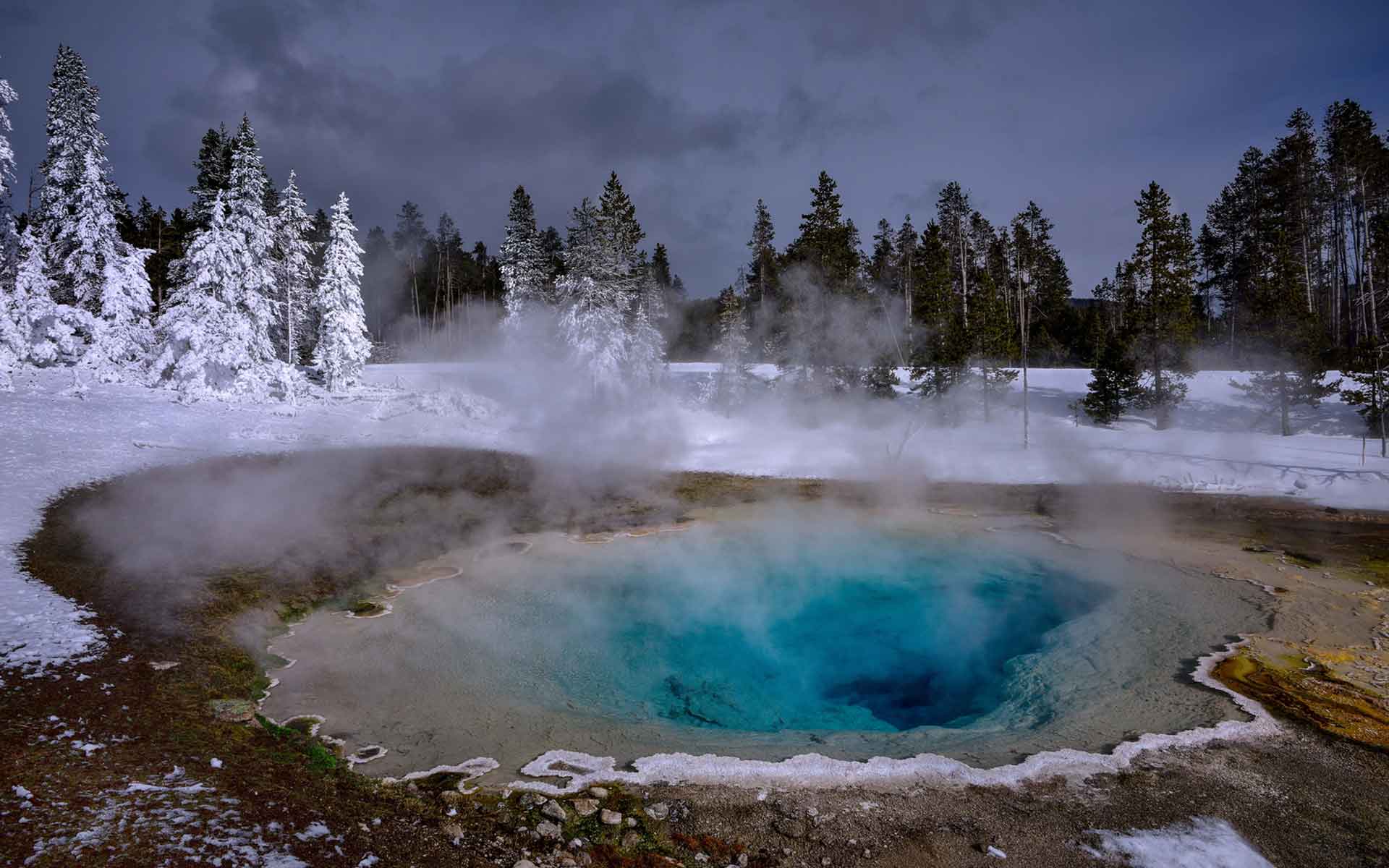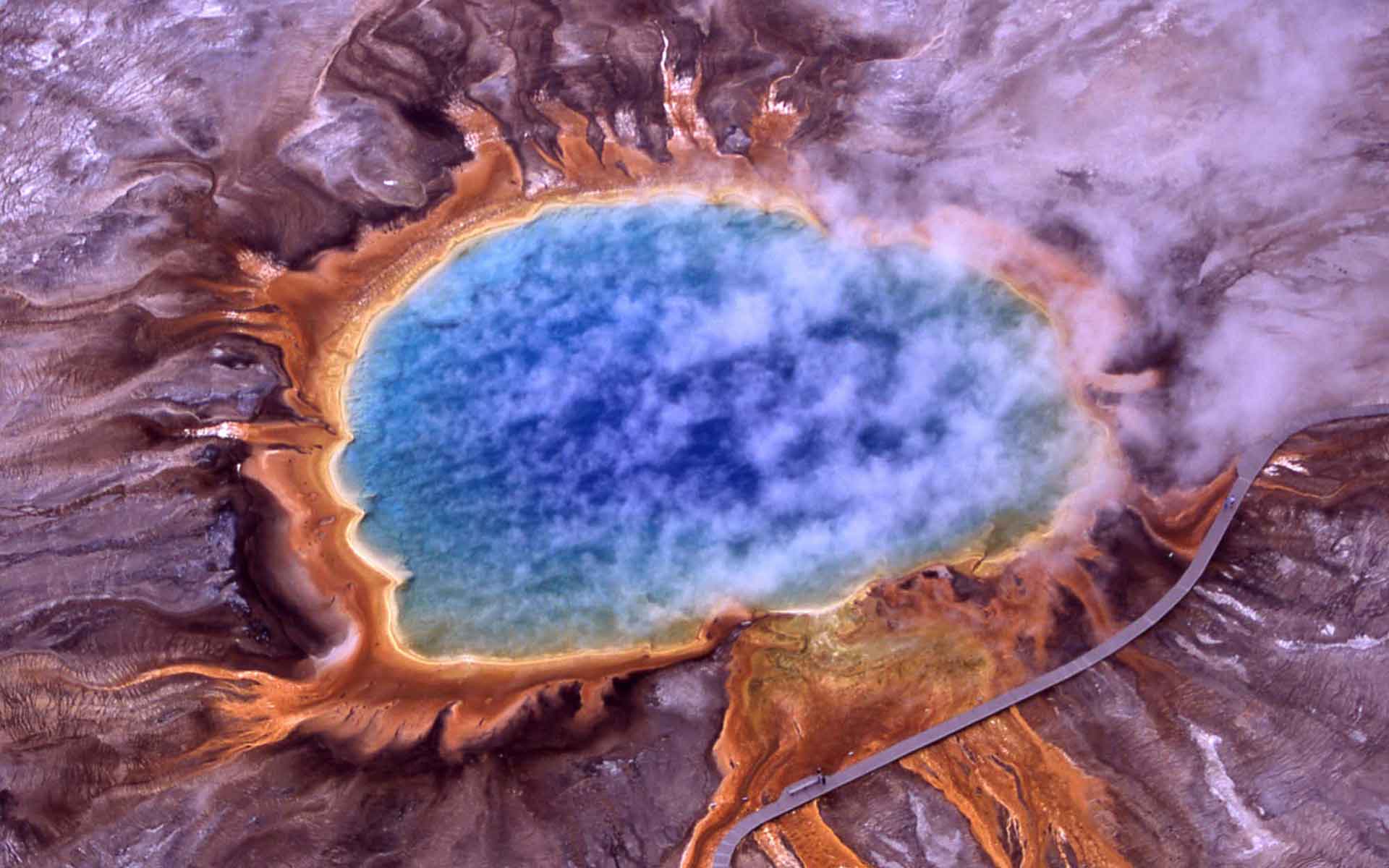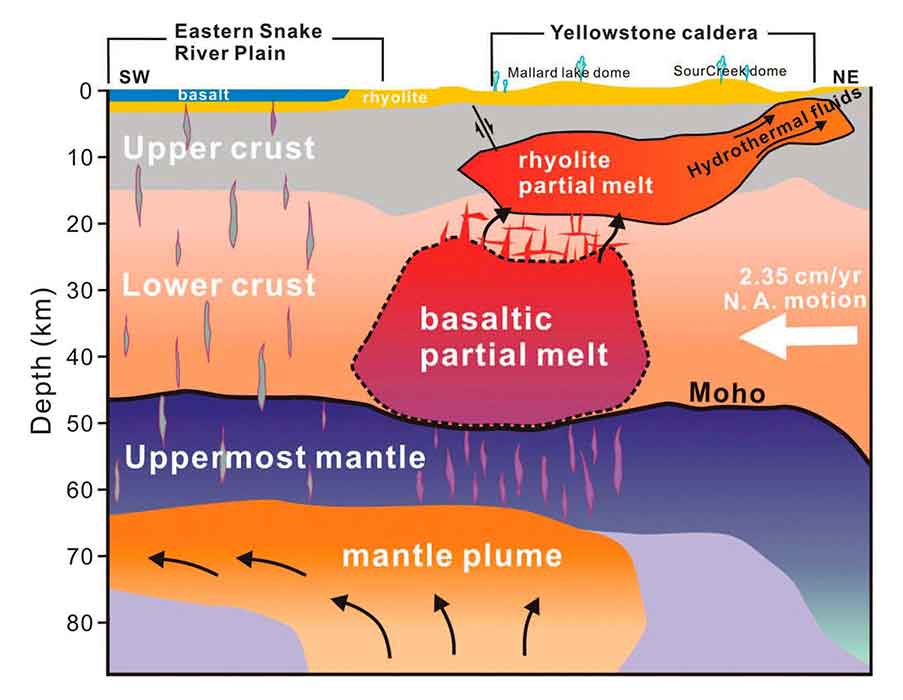
Silex Spring, located in the Lower Geyser Basin, is one of over 10,000 hydrothermal features in Yellowstone National Park, which contains some of the highest concentrations of hydrothermal features in the world. (Copyright Olivier Grunewald).
Geological Period
Quaternary
Main geological interest
Volcanology
Tectonics
Location
Northwest corner of Wyoming with small portions in Idaho and Montana, USA.
44°36’00.0″N, 110°36’00.0″W
Silex Spring, located in the Lower Geyser Basin, is one of over 10,000 hydrothermal features in Yellowstone National Park, which contains some of the highest concentrations of hydrothermal features in the world. (Copyright Olivier Grunewald).
Well-known for its past explosive volcanic eruptions and lava flows as well for its world class hydrothermal system.
The Yellowstone area fits most, if not all, the definitions and standards for an IUGS Geological Heritage Site. It is protected, with most of it within Yellowstone National Park; it has world-class geological deposits that are accessible to the over 4 million annual visitors It is scientifically valuable to a host of disciplines, including but not limited to tectonics, petrology, seismology, volcanology, minerology, geomorphology, biology, ecology, and medicine. Also, it is unique on Earth, hosting world-famous geysers such as Old Faithful and Steamboat. Given the dynamic nature of Yellowstone, it is a superb natural laboratory for biological, ecological, and geological processes.
- Geological description
Yellowstone is home to half the world’s active geysers, including Old Faithful and Steamboat (the world’s tallest at ~100m) geysers, as well as over 10,000 individual hydrothermal features. This volcano provides the opportunity to study the Earth on multiple scales, from imaging the mantle fueling the volcanic system down to an individual extremophile. This renowned hydrothermal system is not only visually stunning but is home to thermophile organisms that provide insight into biological processes and even the origin of life on this planet (Brock, 1985). The Yellowstone area is one of the most seismically active areas in the U.S. Intermountain West. The 1959 M7.3 Hebgen Lake earthuake was the largest earthquake to occur in the region in historical times (Pierce and Morgan, 1992; Smith and Braile, 1994). In addition, Yellowstone is a living, breathing volcanic system with the caldera uplifting and subsiding on decadal time scales. The igneous rock record in Yellowstone is world class, preserving ashflow tuffs from multiple caldera-forming explosive eruptions as well as rhyolitic and basaltic lava flows that are a testament to the size and character of underlying magma reservoirs (Christiansen, 2001; Huang et al., 2015). All of these volcanic deposits are overlain on the extensional tectonics of the Basin and Range province, providing the rare opportunity to study magmatic-tectonic interactions.
- Scientific research and tradition
From the first colonialist expeditions to Yellowstone in the 1800s to the present, Yellowstone has been home and host to numerous curious researchers, resulting in several seminal works and foundational understandings in the earth sciences.
- Reference
Brock, T.D. (1985) ‘Life at High Temperatures’, Science, 230(4722), pp. 132–138. Available at: https://doi.org/10.1126/science.230.4722.132.
Christiansen, R.L. (2001) The Quaternary and Pliocene Yellowstone Plateau volcanic field of Wyoming, Idaho, and Montana, The Quaternary and Pliocene Yellowstone Plateau volcanic field of Wyoming, Idaho, and Montana. USGS Numbered Series 729-G. USGS, p. 146. Available at: https://doi.org/10.3133/pp729G.
Huang, H.-H. et al. (2015) ‘The Yellowstone magmatic system from the mantle plume to the upper crust’, Science, 348(6236), pp. 773–776. Available at: https://doi.org/10.1126/science.aaa5648.
Pierce, K.L. and Morgan, L.A. (1992) ‘The track of the Yellowstone hot spot: Volcanism, faulting, and uplift’, in Regional Geology of Eastern Idaho and Western Wyoming. Link, P.K., Kuntz, M.A., and Platt, L.B., eds. (Geological Society of America Memoir, 179), pp. 1–53. Available at: https://pubs.geoscienceworld.org/gsa/books/book/196/chapter/3793669/Chapter-1
The-track-of-the-Yellowstone-hot-spot
Smith, R.B. and Braile, L.W. (1994) ‘The Yellowstone hotspot’, Journal of Volcanology and Geothermal Research, 61(3), pp. 121–187. Available at: https://doi.org/10.1016/0377-0273(94)90002-7.
- Author(s)
Jamie Farrell
University of Utah
Michael Poland
U.S. Geological Survey
Madison Myers
Montana State University
Robert B. Smith
University of Utah


